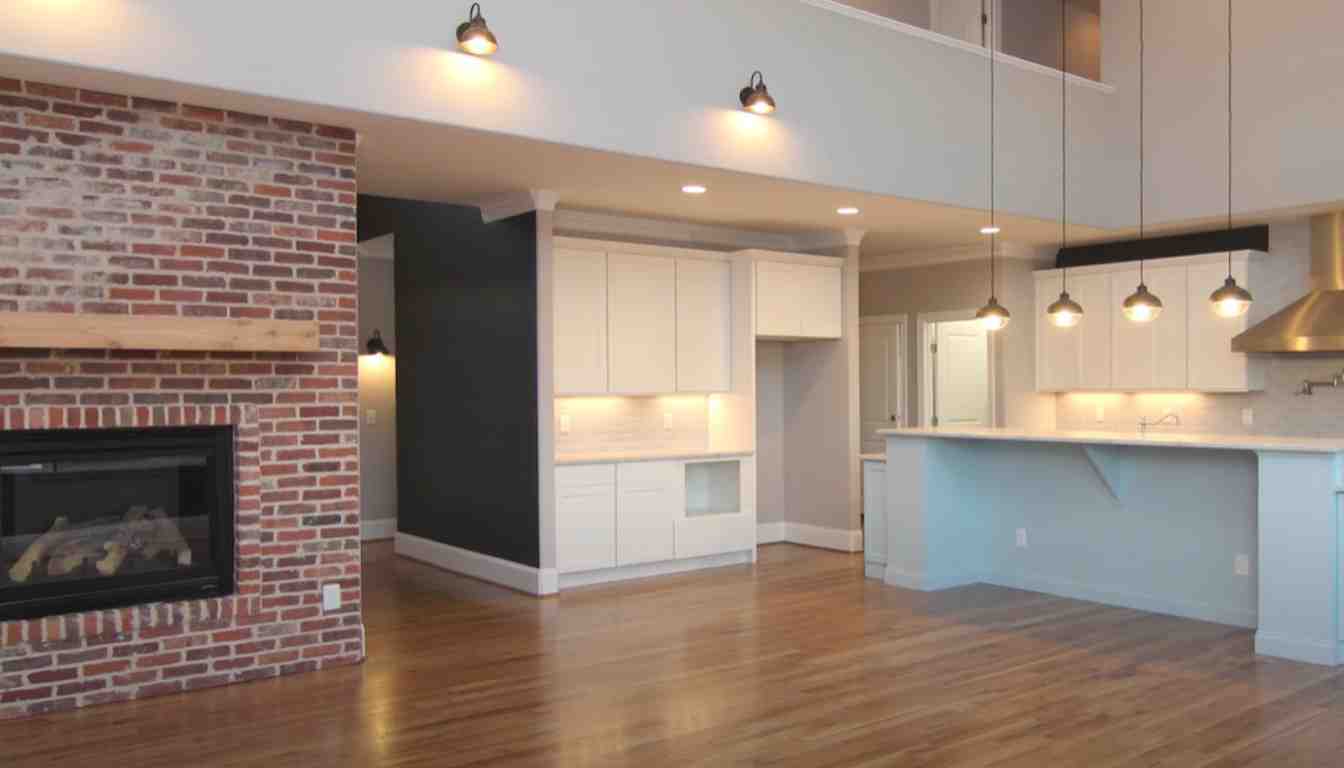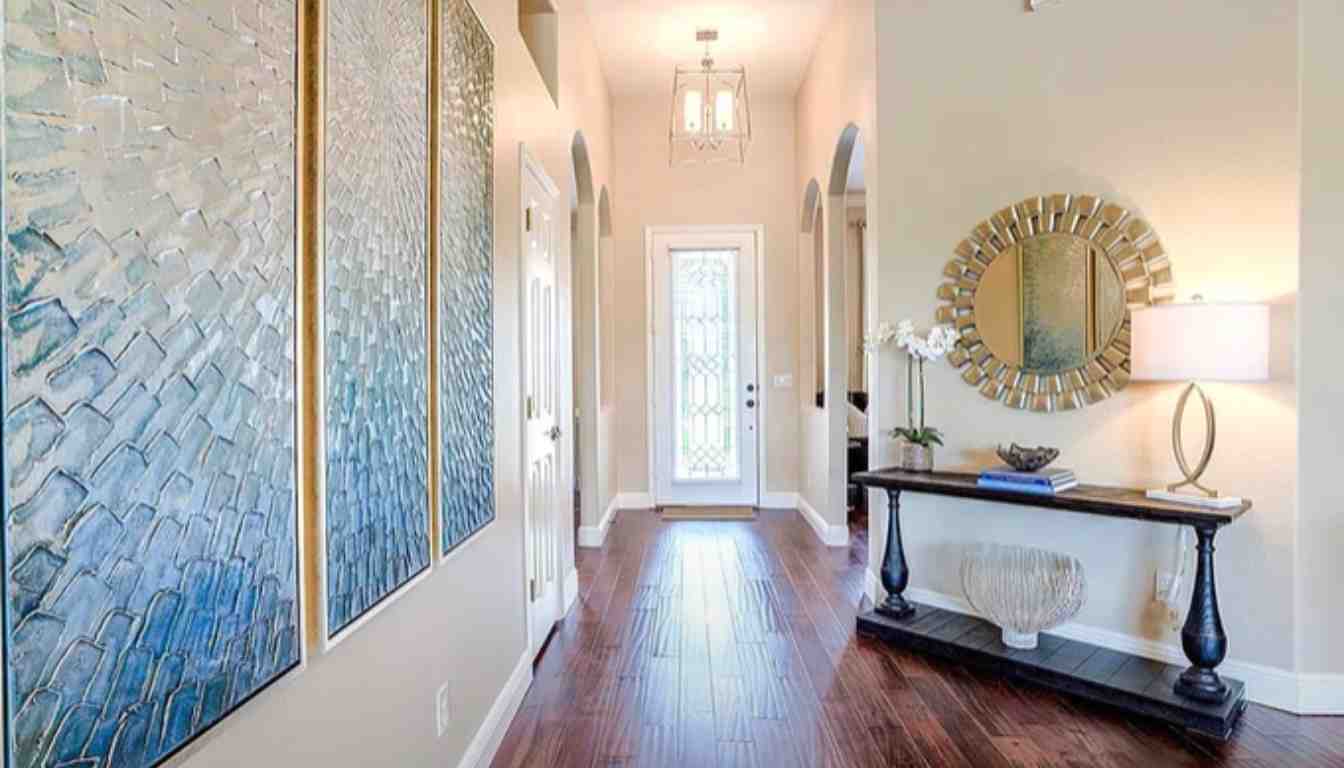Lay wood flooring in the direction of the longest wall in the room. Choose the direction that complements the room’s natural light and aesthetics.
Wood flooring adds warmth and natural beauty to any space, making it a popular choice for homeowners. Whether you’re installing hardwood, laminate, or engineered wood, selecting the right direction for your flooring can enhance the overall look and feel of the room.
By following a few basic guidelines, you can achieve a visually appealing and cohesive result that complements your home’s style. We will discuss the factors to consider when determining which direction to lay wood flooring and provide some helpful tips to ensure a successful installation.
Factors To Consider
When considering which direction to lay wood flooring, factors such as the shape and size of the room, the natural light sources, and the overall aesthetic of the space should be taken into account. Take time to assess these elements and determine the best layout for your wood flooring.
When it comes to installing wood flooring, one important decision you must make is which direction to lay the planks. The direction of the flooring can have a significant impact on the overall aesthetics of your space. To help you make an informed choice, there are several key factors to consider. These include the room shape and layout, the natural light and traffic flow, as well as the existing flooring and subfloor. By taking these factors into account, you can ensure that your wood flooring is not only visually appealing but also functional for your specific needs.
Room Shape and Layout
The shape and layout of a room play a crucial role in determining the best direction to lay wood flooring. If your room is long and narrow, laying the planks parallel to the longest wall can help create a sense of depth and make the room appear more spacious. On the other hand, if your room is square or has an irregular shape, laying the flooring diagonally can add visual interest and make the space feel more dynamic. Consider the unique characteristics of your room when deciding on the direction of your wood flooring.
Natural Light and Traffic Flow
Natural light and traffic flow are two important factors to consider when determining the direction to lay wood flooring. If your room receives an abundance of natural light from a specific direction, you may want to consider laying the planks perpendicular to the light source. This can help minimize the appearance of shadows and create a more uniform look. Additionally, thinking about the traffic flow in your space is vital. Laying the flooring parallel to the main traffic path can enhance the overall durability and longevity of your wood floors.
Existing Flooring and Subfloor
Another factor to consider is the existing flooring and subfloor in your space. If you already have hardwood floors in an adjacent room, it is generally best to lay the new planks in the same direction as the existing ones. This helps create a seamless transition between rooms and maintains a cohesive look throughout your home. Additionally, examining the condition of your subfloor is essential. If you have a plywood subfloor, laying the wood flooring perpendicular to the floor joists can provide optimal stability and prevent any potential sagging over time.
In conclusion, when deciding the direction to lay wood flooring, it is important to consider factors such as the room shape and layout, natural light and traffic flow, as well as the existing flooring and subfloor. By carefully evaluating these factors, you can make a well-informed choice that not only enhances the visual appeal of your space but also ensures the functionality and longevity of your wood flooring.

Different Laying Patterns
When it comes to laying wood flooring, there are various patterns to choose from. Each pattern has its own unique charm and can transform the look and feel of a room. In this blog post, we will explore four popular laying patterns: Straight Pattern, Diagonal Pattern, Herringbone Pattern, and Chevron Pattern.
Straight Pattern
A straight pattern is the most common and straightforward way to lay wood flooring. In this pattern, the floorboards are laid parallel to the longest wall of the room. This creates a clean and classic look that suits most spaces. The straight pattern is easy to install and can make a room appear larger.
Diagonal Pattern
For a more visually dynamic and interesting look, consider a diagonal pattern. In this pattern, the floorboards are laid at a 45-degree angle to the walls. This creates an effect that draws the eye diagonally across the room, making it feel more spacious. The diagonal pattern adds a touch of sophistication and uniqueness to any space.
Herringbone Pattern
The herringbone pattern is a timeless classic that adds elegance and character to any room. In this pattern, the floorboards are laid at a 90-degree angle to create a distinctive “V” shape. The alternating pattern creates a sense of movement and adds visual interest. Herringbone is often associated with traditional and vintage-style interiors but can also work well in modern spaces.
Chevron Pattern
Similar to the herringbone pattern, the chevron pattern also creates a “V” shape. However, in the chevron pattern, the floorboards are cut at an angle and laid to form a continuous zigzag, rather than alternating. This creates a more structured and geometric look that is suitable for contemporary and minimalist interiors. The chevron pattern adds a touch of modernity and sophistication to a room.
Choosing the right laying pattern is essential to achieve the desired aesthetic and atmosphere in your space. Whether you prefer a classic straight pattern, a dynamic diagonal pattern, a timeless herringbone pattern, or a modern chevron pattern, each option has its own unique charm. Consider the style and character of your room, and let your creativity guide you in making the perfect choice for your wood flooring.

Choosing The Right Direction
When it comes to choosing the direction for laying wood flooring, there are several factors to consider. One of the most important decisions you’ll need to make is determining the right direction for your hardwood planks. The direction you choose can have a significant impact on the overall look and feel of a room. In this section, we will explore three key factors that should guide your decision: emphasizing room shape, enhancing natural light, and creating visual interest.
Emphasizing Room Shape
The shape of the room plays a crucial role in determining the direction of your wood flooring. To visually enhance the space, consider aligning the planks parallel to the longest wall. This technique elongates the room and creates a sense of continuity. For example, if you have a rectangular-shaped room, running the planks parallel to the longer walls can help make the room feel larger.
Enhancing Natural Light
Natural light can greatly impact the overall ambiance of a room. To maximize the effect of natural light, it is recommended to install the wood flooring perpendicular to the windows or main source of light. This arrangement allows the natural light to flow across the wood planks, creating a warm and inviting atmosphere. By aligning the planks in this way, you can make the most of the sunlight that enters the room, and even make it appear brighter and more spacious.
Creating Visual Interest
If you are seeking to add visual interest to your space, you may want to consider diagonal or herringbone patterns. These unique configurations can break the monotony of a traditional horizontal or vertical layout, giving your room a distinctive and eye-catching appearance. Diagonal patterns create a sense of movement and depth, while herringbone patterns add elegance and sophistication. When choosing these patterns, it is important to ensure that your space can accommodate them, as they may require additional planning and installation expertise.
Conclusion
Choosing the right direction to lay wood flooring can greatly impact the overall look and feel of your space. Whether you opt for the timeless appeal of horizontal or vertical installation, or the sleek and modern touch of diagonal patterns, understanding the layout options is key.
Consider factors like room dimensions, natural light, and architectural elements to make an informed decision. Ultimately, the direction you choose should harmonize with your design aesthetic and enhance the flow of your space for a beautiful and cohesive result.


